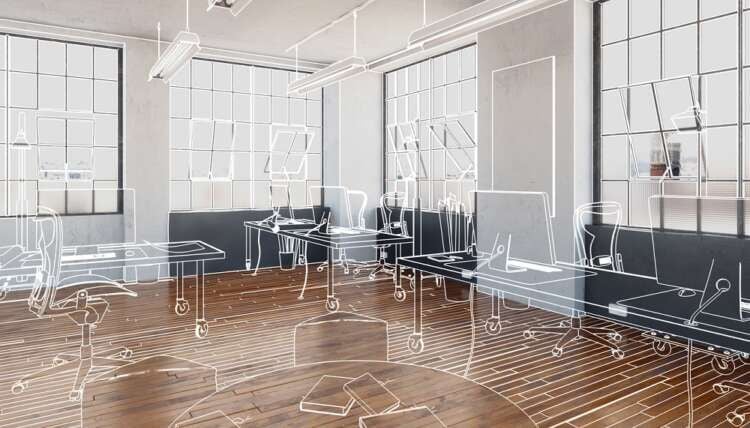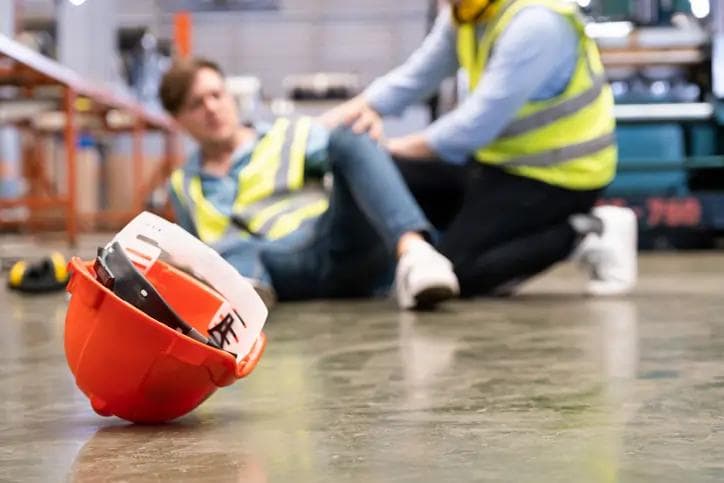Designing the workplace with neurodiversity in mind
Designing the workplace with neurodiversity in mind
Published by Wanda Rich
Posted on July 20, 2022

Published by Wanda Rich
Posted on July 20, 2022

By Gerard Milliken, Divisional Director – Design, Optima Products
Gerard Milliken, Divisional Director – Design, Optima Products
The importance of focusing on employees as individuals has been emphasised by the recent pandemic, however, a cultural change in workforce attitudes was already underway before we even heard about Coronavirus.
However, the last 24 months have had a catalytic effect and, fortunately, businesses are starting to prioritise staff mental and physical health and wellbeing, as reflected by new, more flexible working policies. But inclusion means much more than that, so how are we including the neurodivergent workforce in the conversation about diversity and inclusivity?
Recent studies found around one in seven people, or more than 15% of the UK adult population, are neurodivergent, meaning that their brains operate, learn and process information differently from the socially accepted norm. This encompasses individuals who have one of a range of conditions such as autism, dyslexia, dyspraxia and ADHD (attention deficit disorder).
One size does not fit all
Some organisations are taking direct action to redress this diversity and embrace it. They are altering their workspaces to enable greater collaborative engagement, better suiting the needs of neurodivergent employees as they migrate from the pandemic’s fully remote life to a new hybrid work schedule.
Increasingly, employers are recognising that neurodivergent-friendly offices, which accommodate and embrace staff’s diverse sensory responses to a shared environment, considerably boost the health and well-being of all.
People do not have to change who they are to fit into a space thanks to more inclusive design. Instead, an environment can be tweaked to better serve everyone, neurotypical and neurodivergent equally.
Why neurodiversity matters
Countless studies show that while neurodiverse employees can contribute unique skills such as creative storytelling, coding, and empathy to the workplace, they don’t necessarily thrive within the norms and practices of the traditional workplace.
Many people find working in the modern office difficult. For those who perform their best work in a calm environment, the hustle and bustle of an open-plan office might be distracting. However, this barrier can be significantly larger for those with neurodivergent conditions.
Offices that aren’t designed with neurodiversity in mind can be frustrating and, in the end, disabling. For someone with sensory sensitivity, a work setting without proper acoustic protection to buffer noise pollution can be debilitating, while intense overhead fluorescent lighting can be overwhelming for people with autism. Even certain details which are often overseen, such as texture, colour, sequencing, compartmentalisation, temperature and smells tend to over- or under-stimulate neurodiverse people.
Biological stress levels can build over time depending on how acute the sensitivities are, which can decrease productivity and lead to sick days. This has an impact on performance and confidence, which can result in voluntary or forced unemployment in extreme circumstances. For example, only 21% of people with autism and half those with a disability are in the workforce. I strongly believe that the way we design our workspaces is an obvious component of the problem.
Little changes for a big impact
When tackling neurodiversity, it’s fundamental to understand not everyone undertakes certain tasks in the same way. In fact, designing with neurodiversity in mind requires a much more nuanced approach.
As mentioned, neurodivergent employees may struggle in a traditional workplace, but with slight adjustments that benefit everyone in the office, you’ll manage to leverage their unique skillset and create a more inclusive and diverse environment.
Of course, it’s not realistic to expect organisations to design for individual needs. However, by combining a spectrum of tastes with a variety of places, we may still achieve the intended result, a space fit for everyone to feel capable of working efficiently. Above all, this reduces the appearance of difference.
Because everyone’s needs are different, it is paramount to offer a variety of settings so workers can choose the environment best suited for specific tasks or according to their mood. This means planning out shared open spaces for socializing and collaborating, enclosed quiet spaces for more high-focus work, dedicated phone and meeting zones, places to pause, and relaxing areas to unwind.
In this regard, there are a few key design elements to consider when seeking to enhance office users’ sensory experiences and conditions, making the workplace more inclusive and welcoming for all.
Managing sound and acoustics
Even if divided by cubicles, a busy open-plan office with a loud, motion-heavy atmosphere can lead to a lot of distractions among staff. Furthermore, it’s almost impossible to prevent a natural office culture from unfolding, which typically involves background conversations, sudden laughter and now more than ever, virtual calls.
To combat noise, more and more designers are turning towards solutions that better control sound in the workplace. Certain materials can absorb sound effectively and walls and partition systems can be installed to provide acoustic baffling as well as create a private space to conduct work.
Biophilic design
Biophilia is a concept that suggests that humans possess an innate tendency to seek connections with nature and other forms of life. It is a cost-effective (and visually appealing) strategy to mitigate or eliminate some of the triggers and forms of distractions typically found in an office.
For neurodiverse employees who are overstimulated, having access to sunshine and introducing natural features such as plants around a workplace may have a soothing effect and enhance air quality.
Biophilia benefits everyone, not just neurodiverse people. According to a recent survey, feeling linked to nature in the workplace has a major positive influence on all staff. Boredom and stress are decreased, and well-being can rise by up to 15%. Meanwhile, more interior green spaces, natural daylight, and even brighter colours enhance productivity and creativity, and employees report feeling more valued and supported by their company.
Glass walls and partitions are one of the most effective ways to allow natural light to flow into the space. This simple design decision will instantly make occupants feel more connected to the outdoor world while maintaining noise and privacy levels.
One thing we need to realise is that while designing for neurodiversity, all five senses must be taken into account in order to create an immersive experience rather than just an office where people work.
This motivates people to return to work in the office because they know there will be a sensory experience or a workplace that will suit their personality and work style, and accommodate anybody who is neurodivergent or has a disability.
Explore more articles in the Business category











